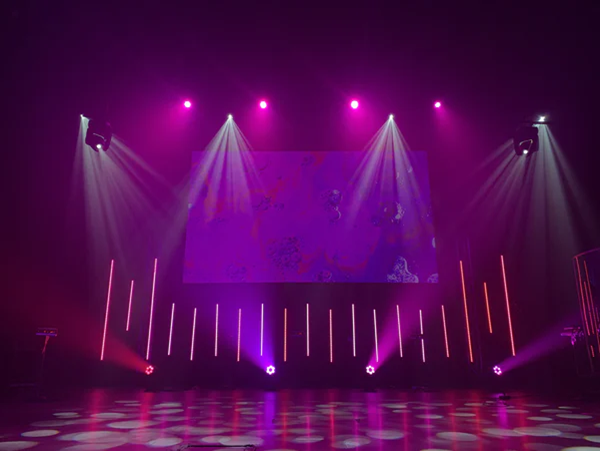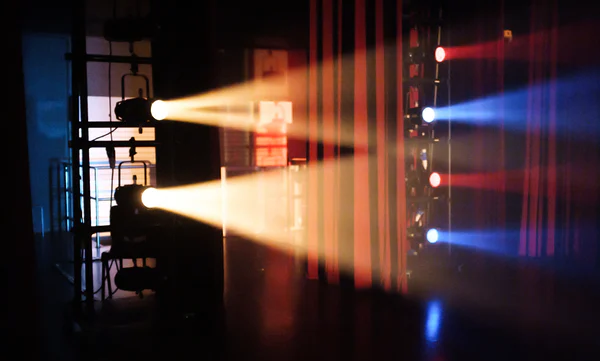Stage Lighting Basics: 7 Useful Tips For Starting Out
Stage Lighting Basics: 7 Useful Tips For Starting Out
The quality of a performance to a large extent depends on professional stage lighting. Stage lighting gives a special meaning to all the stage stories. Lighting shapes the entire environment and has a crucial impact on performances and events. Before venturing into an endless range of lighting techniques, make sure that you get to know the basics and take simple steps. To start out, you will need to learn about some important features as well as many technical aspects of stage lighting. Luckily, we have prepared some useful tips to help you along the way! Check them out.

1. Be Aware of Customization Options
You will need to connect the specific genre of the performance with the type of lighting. Drama, music, or dance performances require different types of customization options. Make sure that you learn about the specific principles behind the genres. What type of light is best for plays and what for dance, for example? What part of the stage do you want to highlight? What kind of atmosphere do you want to achieve with a lighting system? By answering these questions, you can easily decide on the types of lighting as well as positioning.
2. Work With Lighting Designers and Pros
It is always a good idea to let the experience and creativity of lighting designers in the process of stage lighting. You can do it in the very beginning and let them know about your ideas and goals. Provide them with important information as well as your assessment. Furthermore, by engaging lighting professionals, their understanding of how to use stage lighting may change even the most basic venues when used properly. Communicate about your aims as well as the demands of the performances but also let them use their artistic freedom and then you can expect something extraordinary.
3. Consider Lighting Positions
Analyze the size of the space you have. This will help you decide on how many lights you need in the first place, and also get an idea where to place them. Basic lighting positions include front, side, back, and downlighting. Each of these lighting positions has a special role in the stage. Front lighting, for example, is used for lighting up faces and it is the main source of illumination. The side is responsible for the sides of the performer's faces as well as bodies. Backlighting puts performers in focus in the frame of the background and downlighting illuminates the whole stage. Knowing this, you can easily connect the purpose of lighting positioning with the nature of the performances and create the best lighting system for your stage.
4. Get to Know the Different Types
Stage lighting equipment is not only divided according to positioning. In fact, different purposes of the stage are followed by different types of lighting equipment. There are lanterns, soft lamps, floodlights, fixed-focused lights, spotlights, and many others that address specific needs and the nature of the events on the stage. Lighting follows the pace of the stage events and adds to their atmosphere, creating special emotions. The role of different types of stage lighting is to highlight different elements and also to convey and create a special mood, adding to the movement and theme of the stage.
5. Get Inspiration
The best source for inspiration is hidden in the script, choreography, or type of concert. Focus on the things the director tells you about, such as what parts of the scene are the most important, what details they want to be seen the most and you will help create the best atmosphere on the stage. Read the script and consult the people in the charge of the stage show. This will help you create a lighting set-up that will meet the needs and properly convey the texture, mood, movement, and naturalism of the stage.

6. Test Different Angles
The angle you want to position your lights is of great importance. Again, different types of performances will require different lighting angles. You can use a small directional light and test how it shines from different directions. You will be able to see what angles are the best and how they complement the performance.
7. Divide the Stage
Creating lighting zones is essential. Stages are usually divided into 8- to 12-foot diameter circles with a slight overlap. Most of them include three basic zones: front, mid, and back. When the stage is divided, lighting is more targeted and manageable. It also helps you realize if you need some additional lighting to hang up or to add to the background and to experiment with your setting up. You can consider adding special lighting with colors and textures and enhance your lighting layout.
Stage lighting acts as one of the main parts of the very event going on the stage. It creates a special atmosphere and mood and conveys emotions. It helps connect the audience with the performance by guiding them visually. Take the necessary steps and let it shine!